If you are traveling in South Odisha, then you can’t afford to miss Jiranga Monastery which is popularly known as the little Tibet of Odisha. Located in Gajapati district of the state, Jiranga also known as Chandragiri boasts of a sizable Tibetan population thanks to the Chinese invasion of Tibet in !959 that forced religious and political head Dalai Lama and thousands of his followers to take refuge in India. Chandragiri in Gajapati district of Odisha was one of the six sites in India where the Tibetan refugees were settled. Since then Chandragiri or Jiranga has evolved into an area with distinct Tibetan Buddhist character.
Over the years what has become the center of attraction for the visitors in Jiranga is the monastery which was inaugurated by the Dalai Lama in 2010. The monastery called Padma Sambhava Mahavihara which in Tibetan is known as Thupten Mindolling Monastery is said to be the largest monastery in Estern India.
The Tibetans refer to the entire region as Phuntsokling, which translates to “Land of Happiness and Plenty.” Thus, Jiranga which is endowed with gifts of nature such as forest, hills, valleys and waterfalls has become a major tourist attraction with the JIranga monastery as its epicenter. So, if you happen to be in South Odisha, go and visit this place for sure. I had the good opportunity to visit the monastery last month and it turned out to be an awesome experience.
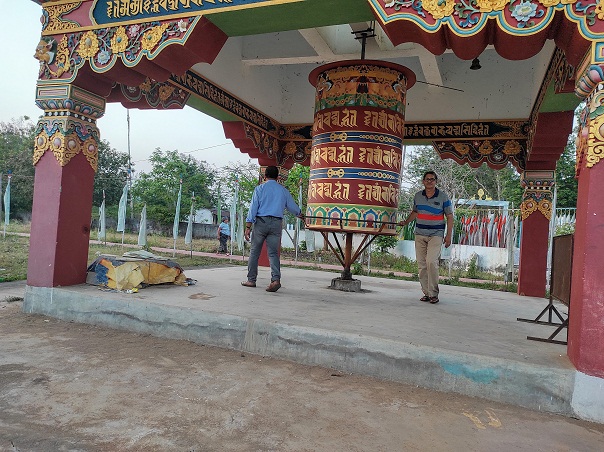
Related post: Bodh Gaya travel: A self-enlighening journey into the land of Buddha
Post Contents
Journey to Jiranga monastery
JIranga is located at a distance of about 270 kilometers from state capital Bhubaneswar and 100 kilometers from Berhampur, a major city in South Odisha. We started the journey in the morning and followed the Chandiput-Luhagudi road for about 55 kilometers before taking a left turn to meet the NH-326A that goes to Parlakhemundi, the district headquarters of Gajapati district..
The drive was along a dry patch with hardly any vegetation. However, as we approached Taptapani (Hot Spring), the topography started to change as the deserted and dry farmland gave way to forest and occasionally ghat roads. We stopped for a few minutes at Taptapani to see the sulfur springs before resuming our journey to Jiranga monastery.
I can say that the drive from Taptapani to Jiranga monastery is one of the most exciting one in terms of scenic beauty and diverse tourist attractions that I have undertaken in Odisha. We meandered along NH-326A enjoying nature and then suddenly I could sense that we were nearing Chandragiri, a major home of Tibetan settlement in Odisha. Now I could see the colourful flags and prayer banners adorning the homes and roads that signify Buddhism as we drove past small villages.
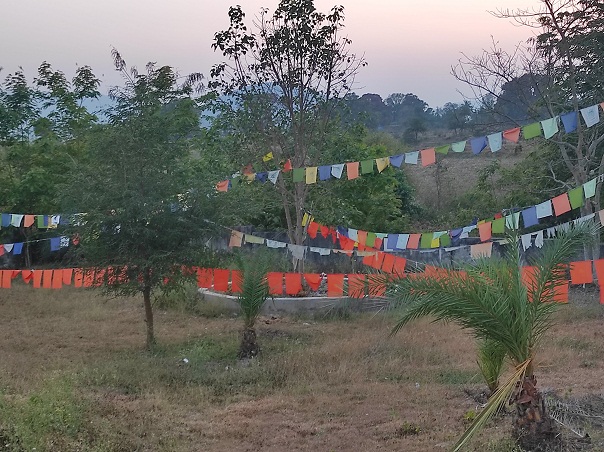
When we reached Chandragiri, a small town on the national highway, I noticed that the place was quite a departure from a typical Indian town that bears more Tibetan Buddhist character than Indian. We caught a glimpse of some monks in maroon robe riding scooters, their cotton bags, loaded with vegetables. Jiranga monastery is about 10 kilometers from Chandragiri and is situated amidst a beautiful valley.
After a few kilometers drive we left NH-326A by taking a right turn. This road takes you to Jiranga monastery and enroute you can visit Khasada waterfall, a major tourist attraction. This was a typical rural Indian road, part asphalt, part dirt. Large swatches of farmland lined both sides of the road.
We were mesmerized by a beautiful lake as we got closer to the monastery. In the center of it is a statue of Padmasamvaba seated atop a lotus. This lake is surrounded on all sides by the monastery complex and allows tourists to relax on its banks while soaking in the serene atmosphere.
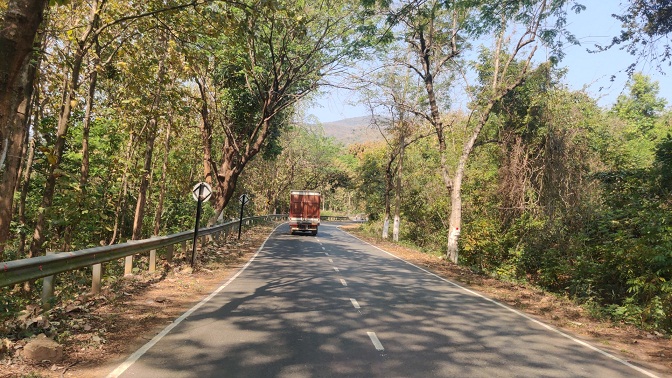
JIranga landscape
While driving to the Jiranga monastery you can see that the eastern ghats dominate the skyline of the valley, with hills of different sizes on all sides. Mahendragiri, the second highest peak of Odisha, is only 70 kms away. The sight of the green fields followed by high hills add to the beauty of the region and fills the heart of all visitors to this beautiful valley.
You can notice large areas of farmland on both sides of the road..These farms are mostly used to grow maize as the soil type here is not suitable for paddy cultivation. Maize crop is the main source of income for the Tibetan population here. There is so much maize grown here that Jirang and its adjoining areas have earned the reputation of being the ‘Maize bowl of Odisha’.
Do Read: Sanchi Stupa: All you need to know about this Buddhist treasure
History of Jiranga
In 1959, the Chinese invasion and annexation of Tibet led some 85,000 Tibetans, including their religious and political head, the 14th Dalai Lama, to seek refuge in India and other countries. Chandragiri, about 80 kilometers from Berhampur, a southern town in Odisha, was chosen as one of the country’s main six camps.
On May 1, 1963, the first batch of Tibetans arrived at Chandragiri. Since their arrival, they have not only made Chandragiri and the adjoining camps at Labarasingh, Mahendragada, and Tankilipadar (all located within a 4-5 kilometre radius of Chandragiri) their home, but they have also added colour to the picturesque mountains of the Eastern Ghats in this part of Odisha through their enterprise and demeanour.
Realising the need for a spiritual center, the Dalai Lama accorded the monastery in 1998. The foundation stone was laid in 2003, and the building was finished in 2008 at a cost of approximately Rs 8 crore.
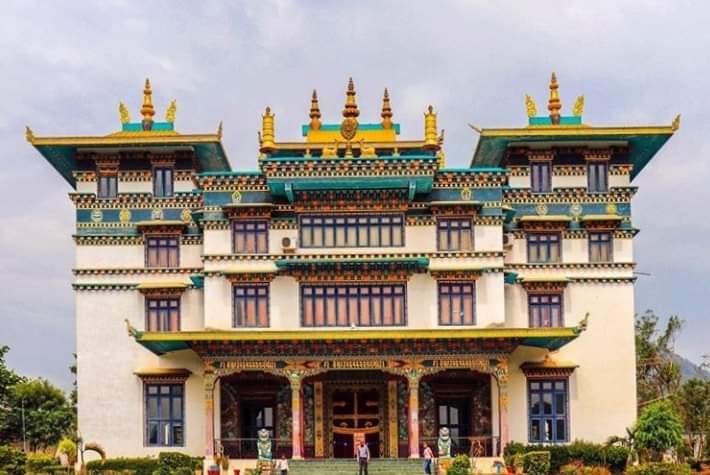
The Jiranga Monastery
You can catch the first glimpse of the top of the monastery while still quite far from reaching the place. The top vimana is coloured in gold, the base of which is white. After some climbing you reach the monastery which is said to be the largest in Eastern India. There is no entry fee to visit the monastery while there is a nominal entry fee of Rs 5 to visit the stupa complex.
An elegant gate welcomes you into the huge courtyard, which includes a carefully groomed lawn and big trees of Banyan, palm, and neem thoughtfully planted to offer much-needed shade. The main monastery is located at one end and is flanked on both sides by rows of residential quarters for the monks. Inaugurated by His Highness Dalai Lama in 2010, the monastery was built at a cost of Rs 8 crores.
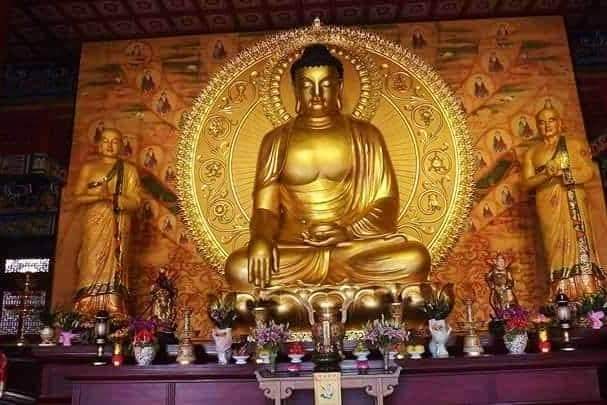
Also Read: Visiting Taratarini Temple, the Adi Shakti Peetha in Odisha
The main temple
The design of the main temple of the monastery follows the Atanpuri style of architecture of Nalanda by architects from Tibet, Nepal and Bhutan assisted by local masons. The structure is 70 feet high and has five stories. It houses a 23 feet high Buddha statue and a 17 feet Buddha Padmasambhava. You can see beautiful murals on the walls which depict nature, various stages of Buddha’s life, and different animals.
The ceiling of the structure is dominated by colourful paintings of mountains, animals, lotus, clouds, and waterfalls – all motifs of Tibetan art – as well as various mandalas’ that symbolize soul transformation. There are also paintings of the phoenix and dragon, which signify the universe’s opposite, but complementing forces. It is clear that underneath these works of art is a complicated set of beliefs that claim to lead a soul to the path of enlightenment.
The main temple also has the inner sanctum that constitutes the meditation hall where sits a 23-foot bronze statue of Lord Buddha, flanked by 17-foot-high statues of Lord Avalokitesavara and Lord Padmasambhava on either side. The walls are filled with beautifully coloured murals of Buddha and Bodhisattvas, animals, the sun and moon, mandalas, and mantras. Most of the paintings have a golden tone that makes them stand out on the wall.
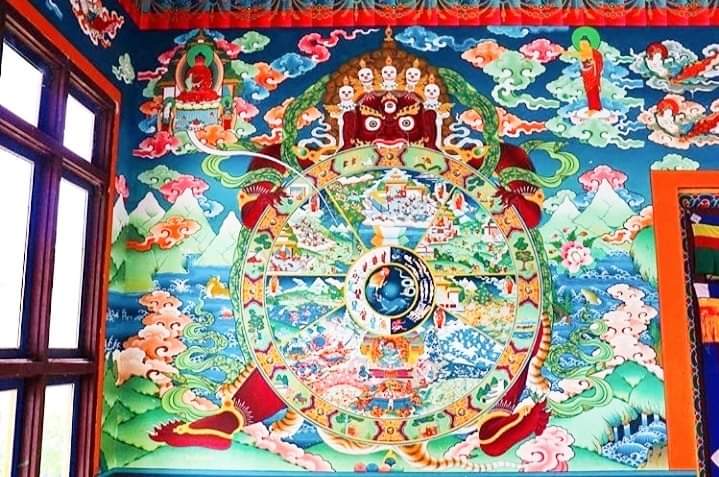
The Hostels for monks
Apart from the main temple, the monastery also houses some residential quarters for students. There are about 200-300 monks presently residing at the monastery for their spiritual study of Tibetan Buddhism. They are not all from Tibet; rather, the most came from different parts of India, such as Sikkim and Darjeeling, who have come to study Buddhism. They usually come here at a young age and stay until they complete their studies, at which point they can choose to stay or move to any other Buddhist temple.
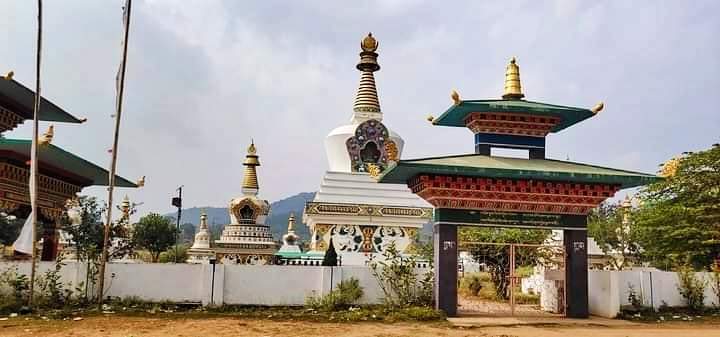
The Stupas of Jiranga
The architecture of Tibetan monasteries is divided into two parts: the main temple, known as Gompas, while the other part is known as the stupas. You have already seen the Gompa, which was the monastery, and it is now time to see the stupas.
After leaving the monastery, you have to walk a good 100 meters to reach the stupa complex.. This walled area has eight stupas arranged in a circular pattern and flanked by colourful prayer flags. Traditionally, these flags have been used to symbolise peace, wisdom, compassion, and strength. Tibetans believe that the prayers and mantras will be carried by the wind and spread goodwill and compassion.
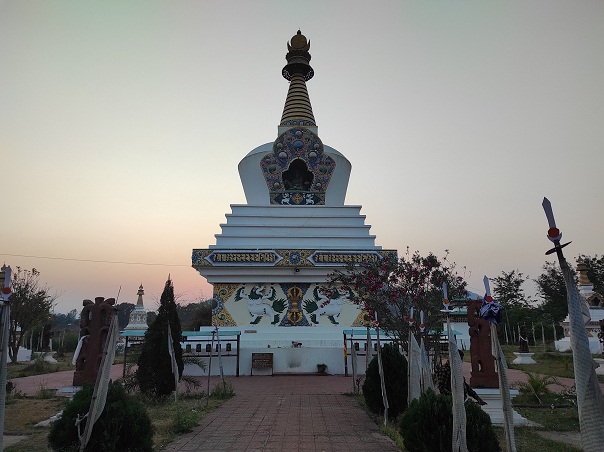
The stupas refer to major events in Lord Buddha’s life as explained in Tibetan Buddhism. The Stupa of Enlightenment, the tallest of them all, stands in the centre, symbolizing Lord Buddha’s attainment of enlightenment when he conquered worldly temptations.
You can see the prayer wheels or dharma chakra in different parts of the Stupa complex.One of them is particularly huge, enclosed within a canopy and a few smaller ones, bordering the periphery of the largest stupa.
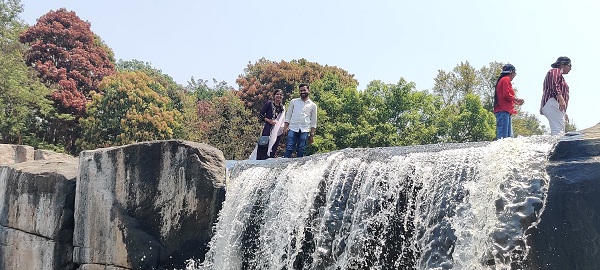
Recommended Read: Everything you need to know about Ranipur Jharial temples
Travel Tips
- Jiranga is around 260 kilometers from Bhubaneswar and approximately 90 kilometers from the Silk City of Berhampur. There are frequent private and government bus services available from Bhubaneswar to Berhampur. You can take a bus from Berhampur to Chandragiri or hire a taxi to get here. The Biju Patnaik International Airport in BHubaneswar is the nearest airport some 270 kilometers away while Berhampur railway station is the nearest railhead.
- There are not many options for accommodation in Jiranga, though the monastery has a guest house called RIpa guest house. If you want to stay enroute Jiranga, then the guest house at Taptapani managed by OTDC is the best option. According to the latest information, the guest house is now run by a private party. But it is always a good idea to stay at Berhampur which has a lot of options for your comfortable stay according to your budget.
- Jiranga can be visited at any time of the year, But, the winter months from October to February is the most suitable time due to the pleasant climate.
- Don’t miss to purchase the local produce like maize, local ginger and the millets like Bajra and Ragi. These are produced in plenty in the JIranga valley and you will find small outlets in the road sides of the villages. These are pure stuff and the price is also quite reasonable. Jiranga is known as the maize bowl of Odisha and thus the ‘maize atta’ is the most popular and it sells like hot cake.
- During your drive from Berhampur to Jiranga Monastery you will come across a few tourist attractions which deserve a visit. Do stop and spend some time at the sulfur springs (hot water spring) at Taptapani and the picturesquely located Khasada waterfall. You can also think of visiting Gandahati waterfall which is about 70 kilometers away from JIranga.

